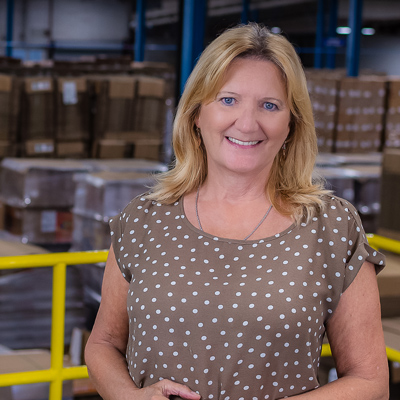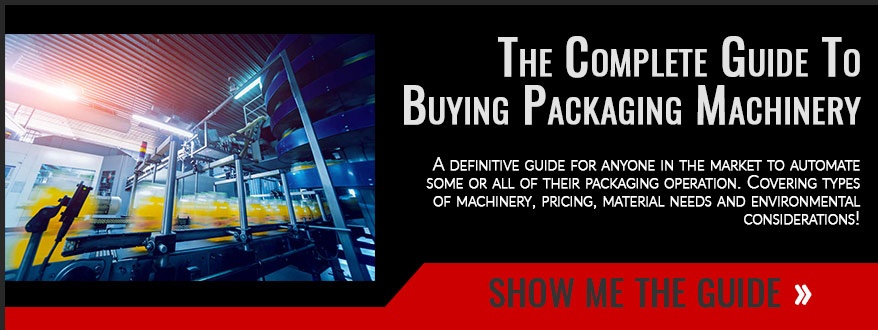Poor Results On Your Shrink Wrapping? It May Be Your Product
We get calls all the time from people who tell us they can’t get their product to come out the way they want it to on their packaging machinery. We hear and understand the frustration when your final product does not look anything like what you thought it would look like.
That being said, I’m happy to help anyone who is having a problem, it’s what I do, and I enjoy solving problems. And so, I often find myself consulting customers and trying to help them with their packaging machinery and materials problems.
But, then I realized that sometimes when people do online research, they might not fully understand how different machines and materials will react to their products. When I hear someone say: "I purchased a machine from here", another machine from there, and my materials from yet another supplier", my mind starts spinning with all kinds of questions and concerns.
For example, we provide technical service for many of our clients. One day, we got a call about a machine purchased overseas that the customer could not get started. The machine did not have a manual, so we had to send away for it. When it came in, our tech started going through all the steps only to find out one of the boards was bad.
The time spent on calls and waiting for parts to come from overseas was so frustrating for the customer. Not only that, but the expense to have us come out several times to make repairs on a machine that was purchased online was very costly. While the machine they bought online was less expensive than one bought in the states, it was now costing them almost as much.
When ordering online, there is more thought that needs to be given to what your expectations are which include, your desired outcome and the capabilities of each aspect of your process when everything is in place.
Having worked at Industrial Packaging and by extension, within the packaging industry for over twenty years, I have come to realize that many consumers often make mistakes when buying machinery and materials on-line and then trying to make adjustments themselves.
In this article, I will break down some common issues and help you to better understand how to execute the packaging design you have inside your head. You will be able to translate that idea into a reality with the information presented below.
Questions To Answers For Better Shrink Packaging
The basic concept of how a shrink sealing machine works is the same for all projects. You put the film on the machine, move it down, and seal it up. After that, it goes into a shrink tunnel. Easy peasy.
But, in order to get a quality shrink on your products that result in an appealing final product, you are going to have to ask yourself a few questions.
- Is the tunnel big enough to accommodate your product? Is your product too big for the tunnel? If so, it may get too close to the heating elements which can result in tears and other common shrink film problems.
- Can your heat tunnel get hot enough to properly seal your product? If your heat tunnel is not getting hot enough, you will not see a well-wrapped final product. The inability to make the tunnel hot enough may mean that your machine needs adjustments or even repairs.
- Is your heat tunnel too hot for your product? There are some products that cannot withstand even the lowest settings on a heat tunnel. This always results in issues. To find out if your product can withstand the heat of a shrink tunnel, you will want to speak to a packaging expert about running a heat test. They will use heat sensitive tapes that can notify you if your product is appropriate for shrink wrapping or not.
- Will your product make it through from one end to the other with a good shrink? Oddly shaped, and over-sized products may not move through your shrink tunnel the way you want them to. See your machinery's documentation or product specifications to ensure that your product meets the requirements to be run through your machinery. If you have trouble finding this information, simply ask a packaging professional for assistance.
It is important to double check the weight, height, width and related dimensions of your product and cross-check their compatibility with your machinery's documentation to make sure they can be properly run through your equipment without issue.
If you have rollers on your machine, your product might get stuck between the rollers. Depending on how wide the gap is between the rollers and how small your item is, they may not shrink correctly or they may cause damage to the rollers or chain.
- Do you understand the different types of belts available that will support your product? Before running a product through your machinery, you should consult with your rep to make sure that no additional items are required to properly run the products. For example, you may need to set up some guides to keep the product in the middle of the tunnel while it is traveling through the equipment.
- And what about the materials? You may have done some research on sizes, gauges, and different formulations of film, but, did you know that different types of chemicals used in some items (for example, perfumes used in soaps and candles) react uniquely to films? Therefore, you need to make sure you are using the right film.
Need Help Choosing The Right Packaging Machinery?
Other Things To Consider Prior To Buying Shrink Machinery
It should be noted that there are different types of film available for purchase. There is PVC shrink film, polyolefin shrink film and polyethylene shrink film. There are also specialty films such as perforated shrink film, printed shrink film and heat sensitive shrink film.
Each of these formulations are designed for specific product packaging applications. Using the wrong type of shrink film on the wrong type of product can result in various problems.
For example: when we ask people if they are using perforated film, many will say no. But, most customers truly don’t know what that is or how to tell if their film is perforated or if their products should be using it.
Perforated film has hundreds of tiny holes perforated into the film. It helps let the air out of the package as it heats up in the tunnel. Allowing the air out helps to avoid blowing holes in the seam and other areas of the film.
Seek Clarification For Proper Shrink Packaging Protocols
Despite having all the answers to these questions, there are many more questions to be asked before the right machines and materials can be determined. It would be well advised to work with a local packaging professional to ensure that not only are you asking all of the right questions, but that you are in fact, getting all the right answers.
There are many questions that are often overlooked or under-thought by customers on a regular basis. However, these are not the only questions you must find the correct answers to in order to produce a properly shrink sealed product.
You should write down a list of the all the questions you would like answered prior to implementing your packaging machinery and materials solutions and review them with your packaging vendor. In addition to providing the correct answers to those questions, they will be able to help you identify other important questions that you are not currently asking.
After you have worked to identify all of the correct answers to all of the appropriate questions, you will then be able to implement the correct machinery and materials to produce high quality product packaging that looks professional and is aesthetically appealing to your customers.
So, when you’re ready to make a purchase, do some research, see what’s out there, make some selections, pick your favorites, then speak to a packaging professional, before you buy.
Do Your Research Before Buying Packaging Machinery
When thinking about purchasing packaging machinery and materials, you need to take the time to do your due diligence and homework before you make such an important purchase for your business. Identifying the correct answers to your questions in addition to asking the right questions, will make all of the difference in the world.
This could save you a lot of headaches in the future! For example, if you are thinking about upgrading old packaging machinery or buying new packaging equipment for the first time, you need to spend time researching all elements of a packaging machinery purchase.
Our complete guide to packaging machinery has everything you need to prepare for the packaging machinery buying process. Once you have completed reading this guide, you will then have all of the information required to formulate the appropriate questions to figure out which type of machinery is right for you.




